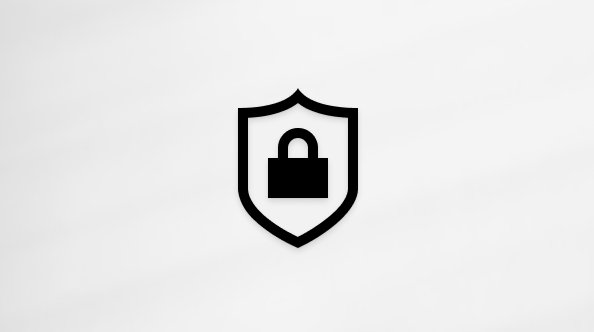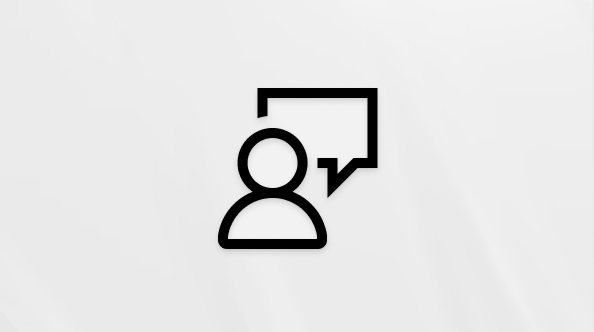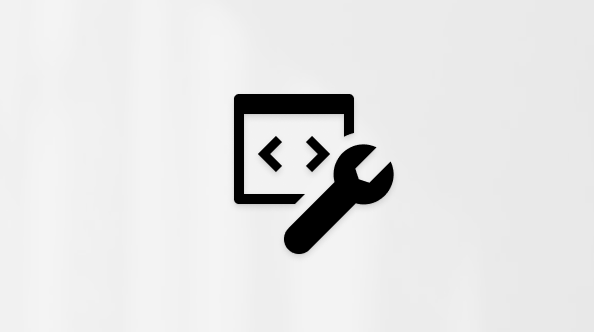Microsoft Edge is a popular web browser developed by Microsoft. However, users may encounter issues while downloading, installing, or updating it. This article provides troubleshooting steps to help resolve these common problems.
Run the Program Compatibility Troubleshooter
If you are using a Windows 11 device, start by running the automated Program Compatibility troubleshooter in the Get Help app. It will automatically run diagnostics and attempt to fix most of the problems. If you are using an older version of Windows or a mobile device, please skip to General troubleshooting steps.
Run the Program Compatibility Troubleshooter
Select Microsoft Edge in the GetHelp app's automated flow and follow on-screen instructions to resolve the problem.
Troubleshoot download issues with Microsoft Edge
-
Ensure you have a stable internet connection.
-
Restart your router or switch to a different network.
To check if Microsoft servers are experiencing downtime, go to the Microsoft 365 admin center and navigate to the "Service health" section. This will show you the status of various Microsoft services like Office Online, Teams, Exchange Online, and more, allowing you to see if there are any known issues or outages impacting the services you're using.
Temporarily disable any antivirus or firewall that might be blocking the download:
-
Open the antivirus or firewall application from the Start menu.
-
Look for an option to disable or pause protection, often found in the Settings, Tools, or Protection tab.
-
Select a duration for the temporary disable (e.g., 10 minutes, 1 hour).
-
Update your antivirus software.
If the download is failing in your current browser, try using Google Chrome, Mozilla Firefox, or another browser.
Corrupt cache files may interfere with downloads. Clear your browser’s cache and cookies, then retry the download.
Use the official direct download link from Microsoft’s website: https://www.microsoft.com/edge
Troubleshoot installation issues with Microsoft Edge
Click the link below to open the troubleshooter directly, or follow the steps provided to access it manually.
Run the Program Compatibility Troubleshooter
-
Select Start > Settings > System > Troubleshoot > Other troubleshooters.
-
Locate Program Compatibility Troubleshooter and select Run.
-
Follow the on-screen instructions to complete the process.
Make sure your system has enough free disk space for installation.
Select Start, type Microsoft Edge, and in the search results, right-click on the Microsoft Edge app. Then, choose Run as administrator to grant the necessary permissions.
Verify that your operating system meets the minimum system requirements for Microsoft Edge.
Antivirus programs may block installation. Temporarily disable them and attempt installation again.
-
Open the antivirus or firewall application from the Start menu.
-
Look for an option to disable or pause protection, often found in the Settings, Tools, or Protection tab.
-
Select a duration for the temporary disable (e.g., 10 minutes, 1 hour).
-
Update your antivirus software.
Remove old installation files from C:\Program Files (x86)\Microsoft\Edge\ before reinstalling.
Troubleshoot issues with updating Microsoft Edge
Click the link below to open the troubleshooter directly, or follow the steps provided to access it manually.
Run the Program Compatibility Troubleshooter
-
Select Start > Settings > System > Troubleshoot > Other troubleshooters.
-
Locate Program Compatibility Troubleshooter and select Run.
-
Follow the on-screen instructions to complete the process.
Delete Edge update cache by navigating to C:\Users\YourUsername\AppData\Local\Microsoft\Edge\Update\
Select Start > Settings > Windows Update > Check for updates. Download and install any new updates.
Close all Edge browser windows and restart the application.
If updates fail, uninstall and reinstall Edge using the latest version from the Microsoft website. https://www.microsoft.com/edge
General troubleshooting
Please try the following general troubleshooting steps to help solve the problem.
Microsoft Edge is currently available on Windows 11, Windows 10, 32-bit (x86) and 64-bit (x64). It's also available on macOS 10.12 Sierra or higher.
-
Check your network connection. For more info, see Fix network connection issues in Windows.
-
Check your VPN. If you received a 403 error and are using VPN, the VPN might be blocking Microsoft Edge from downloading correctly. Try disconnecting from the VPN temporarily while you download and install Microsoft Edge.
If you or your organization block certain web sites, make sure to allow https://msedge.api.cdp.microsoft.com, from which Microsoft Edge checks for updates, as well as *.dl.delivery.mp.microsoft.com, from which Microsoft Edge can be downloaded during an initial install or when an update is available. For more details, see Allow list for Microsoft Edge endpoints.
If you're using Internet Explorer to download Microsoft Edge, you might need to add officeapps.live.com to your browser's list of trusted sites.
-
In Internet Explorer, select Tools > Internet options.
-
Select the Security tab, then select Trusted sites (with the green checkmark) > Sites.
-
Under Add this website to the zone, type https://officeapps.live.com, select Add, and then select Close.
-
Continue downloading and reinstalling Microsoft Edge.
-
Open any working browser. (Note: If you’re a Windows user and your Microsoft Edge is not currently functioning, to open Google chrome or any other working browser)
-
Go to www.microsoft.com/edge to download and reinstall Microsoft Edge.
If there's still a problem, restart your computer, and then try reinstalling Microsoft Edge again. To restart your computer, select Start > Power > Restart .
Error codes and their potential causes
The following list outlines error codes and potential causes associated with Windows Update. Click on the error code to view the detailed troubleshooting steps to resolve.
|
Error code |
Cause |
|---|---|
|
Access denied due to permission issues |
|
|
Invalid parameters during installation or update |
|
|
Connection to Microsoft update servers failed |
|
|
Another update is in progress |
|
|
DNS server issue is preventing download |
|
|
Incorrect date & time settings |
|
|
(last four digits xxxx can be anything) |
Installation or update files are missing or corrupt |
|
Edge update service is missing or disabled |
Follow the below troubleshooting steps to resolve the issue.
Run Microsoft Edge as Administrator: Select Start, type Microsoft Edge, and in the search results, right-click on the Microsoft Edge app. Then, choose Run as administrator to grant the necessary permissions.
Check if Windows Update Service are running:
-
Press Win + R, type services.msc, and press Enter.
-
Locate the Windows Update service and check if its running.
-
Press Win + R, type services.msc, and hit Enter.
-
Find Windows Update, right-click, and select Start (if not running).
Disable third-party antivirus temporarily and retry installation:
-
Open the antivirus or firewall application from the Start menu.
-
Look for an option to disable or pause protection, often found in the Settings, Tools, or Protection tab.
-
Select a duration for the temporary disable (e.g., 10 minutes, 1 hour).
-
Update your antivirus software.
Follow the below troubleshooting steps to resolve the issue.
-
Clear temporary files: Press Win + R, type %temp%, and delete all files.
-
Use the official direct download link from Microsoft’s website: https://www.microsoft.com/edge
Follow the below troubleshooting steps to resolve the issue.
Run the Windows Update troubleshooter:
-
Select Start > Settings > System > Troubleshoot > Other troubleshooters.
-
Locate Windows Update and click Run.
-
Follow the on-screen instructions to complete the process.
Restart your router and try again.
Follow the below troubleshooting steps to resolve the issue.
Check for pending Windows updates: Select Start > Settings > Windows Update > Check for updates. Download and install any new updates.
Restart your PC: Select Start > Power > Restart
Follow the below troubleshooting steps to resolve the issue.
Change to Google DNS:
-
Open Control Panel > Network and Internet > Network Connections.
-
Right-click your active connection and select Properties.
-
Select Internet Protocol Version 4 (TCP/IPv4) and click Properties.
-
Use the following DNS:
-
Preferred: 8.8.8.8
-
Alternate: 8.8.4.4
-
Run ipconfig /flushdns in Command Prompt.
Follow the below troubleshooting steps to resolve the issue.
-
Open Settings > Time & Language > Date & Time.
-
Enable Set time automatically.
-
Click Sync now.
-
Open any working browser. (Note: If you’re a Windows user and your Microsoft Edge is not currently functioning, to open Google chrome or any other working browser)
-
Go to www.microsoft.com/edge to download and reinstall Microsoft Edge.
Open Services (services.msc), locate Microsoft Edge Update Service, and set it to Automatic.
Manually update Edge: Open Microsoft Edge by typing edge://settings/help in browser and check for updates.
Microsoft Edge is a popular web browser developed by Microsoft. However, users may encounter issues while downloading, installing, or updating it. This article provides troubleshooting steps to help resolve these common problems.
Run the Program Compatibility Troubleshooter
If you are using a Windows 10 device, start by running the automated Program Compatibility troubleshooter in the Get Help app. It will automatically run diagnostics and attempt to fix most of the problems. If you are using an older version of Windows or a mobile device, please skip to General troubleshooting steps.
Run the Program Compatibility Troubleshooter
Select Microsoft Edge in the GetHelp app's automated flow and follow on-screen instructions to resolve the problem.
Troubleshoot download issues with Microsoft Edge
-
Ensure you have a stable internet connection.
-
Restart your router or switch to a different network.
To check if Microsoft servers are experiencing downtime, go to the Microsoft 365 admin center and navigate to the "Service health" section. This will show you the status of various Microsoft services like Office Online, Teams, Exchange Online, and more, allowing you to see if there are any known issues or outages impacting the services you're using.
Temporarily disable any antivirus or firewall that might be blocking the download:
-
Open the antivirus or firewall application from the Start menu.
-
Look for an option to disable or pause protection, often found in the Settings, Tools, or Protection tab.
-
Select a duration for the temporary disable (e.g., 10 minutes, 1 hour).
-
Update your antivirus software.
If the download is failing in your current browser, try using Google Chrome, Mozilla Firefox, or another browser.
Corrupt cache files may interfere with downloads. Clear your browser’s cache and cookies, then retry the download.
Use the official direct download link from Microsoft’s website: https://www.microsoft.com/edge
Troubleshoot installation issues with Microsoft Edge
Click the link below to open the troubleshooter directly, or follow the steps provided to access it manually.
Run the Program Compatibility Troubleshooter
-
Select Start > Settings >Update & Security.
-
From the left-hand menu, select Troubleshoot, then click Additional troubleshooters.
-
Go to Find and fix other problems section and select Program Compatibility Troubleshooter.
-
Select Run the troubleshooter and follow the on-screen instructions to complete the process.
Make sure your system has enough free disk space for installation.
Select Start, type Microsoft Edge, and in the search results, right-click on the Microsoft Edge app. Then, choose Run as administrator to grant the necessary permissions.
Verify that your operating system meets the minimum system requirements for Microsoft Edge.
Antivirus programs may block installation. Temporarily disable them and attempt installation again.
-
Open the antivirus or firewall application from the Start menu.
-
Look for an option to disable or pause protection, often found in the Settings, Tools, or Protection tab.
-
Select a duration for the temporary disable (e.g., 10 minutes, 1 hour).
-
Update your antivirus software.
Remove old installation files from C:\Program Files (x86)\Microsoft\Edge\ before reinstalling.
Troubleshoot issues with updating Microsoft Edge
Click the link below to open the troubleshooter directly, or follow the steps provided to access it manually.
Run the Program Compatibility Troubleshooter
-
Select Start > Settings >Update & Security.
-
From the left-hand menu, select Troubleshoot, then click Additional troubleshooters.
-
Go to Find and fix other problems section and select Program Compatibility Troubleshooter.
-
Select Run the troubleshooter and follow the on-screen instructions to complete the process.
Delete Edge update cache by navigating to C:\Users\YourUsername\AppData\Local\Microsoft\Edge\Update\
-
Select Start > Settings > Update & security.
-
Under the Windows Update tab, select Check for updates. Let it download and install any available updates.
Close all Edge browser windows and restart the application.
If updates fail, uninstall and reinstall Edge using the latest version from the Microsoft website. https://www.microsoft.com/edge
General troubleshooting
Please try the following general troubleshooting steps to help solve the problem.
Microsoft Edge is currently available on Windows 11, Windows 10, 32-bit (x86) and 64-bit (x64). It's also available on macOS 10.12 Sierra or higher.
-
Check your network connection. For more info, see Fix network connection issues in Windows.
-
Check your VPN. If you received a 403 error and are using VPN, the VPN might be blocking Microsoft Edge from downloading correctly. Try disconnecting from the VPN temporarily while you download and install Microsoft Edge.
If you or your organization block certain web sites, make sure to allow https://msedge.api.cdp.microsoft.com, from which Microsoft Edge checks for updates, as well as *.dl.delivery.mp.microsoft.com, from which Microsoft Edge can be downloaded during an initial install or when an update is available. For more details, see Allow list for Microsoft Edge endpoints.
If you're using Internet Explorer to download Microsoft Edge, you might need to add officeapps.live.com to your browser's list of trusted sites.
-
In Internet Explorer, select Tools > Internet options.
-
Select the Security tab, then select Trusted sites (with the green checkmark) > Sites.
-
Under Add this website to the zone, type https://officeapps.live.com, select Add, and then select Close.
-
Continue downloading and reinstalling Microsoft Edge.
-
Open any working browser. (Note: If you’re a Windows user and your Microsoft Edge is not currently functioning, to open Google chrome or any other working browser)
-
Go to www.microsoft.com/edge to download and reinstall Microsoft Edge.
If there's still a problem, restart your computer, and then try reinstalling Microsoft Edge again. To restart your computer, select Start > Power > Restart .
Error codes and their potential causes
The following list outlines error codes and potential causes associated with Windows Update. Click on the error code to view the detailed troubleshooting steps to resolve.
|
Error code |
Cause |
|---|---|
|
Access denied due to permission issues |
|
|
Invalid parameters during installation or update |
|
|
Connection to Microsoft update servers failed |
|
|
Another update is in progress |
|
|
DNS server issue is preventing download |
|
|
Incorrect date & time settings |
|
|
(last four digits xxxx can be anything) |
Installation or update files are missing or corrupt |
|
Edge update service is missing or disabled |
Follow the below troubleshooting steps to resolve the issue.
Run Microsoft Edge as Administrator: Select Start, type Microsoft Edge, and in the search results, right-click on the Microsoft Edge app. Then, choose Run as administrator to grant the necessary permissions.
Check if Windows Update Service are running:
-
Press Win + R, type services.msc, and press Enter.
-
Locate the Windows Update service and check if its running.
-
Press Win + R, type services.msc, and hit Enter.
-
Find Windows Update, right-click, and select Start (if not running).
Disable third-party antivirus temporarily and retry installation:
-
Open the antivirus or firewall application from the Start menu.
-
Look for an option to disable or pause protection, often found in the Settings, Tools, or Protection tab.
-
Select a duration for the temporary disable (e.g., 10 minutes, 1 hour).
-
Update your antivirus software.
Follow the below troubleshooting steps to resolve the issue.
-
Clear temporary files: Press Win + R, type %temp%, and delete all files.
-
Use the official direct download link from Microsoft’s website: https://www.microsoft.com/edge
Follow the below troubleshooting steps to resolve the issue.
Run the Windows Update troubleshooter:
-
Select Start > Settings > Update & Security.
-
From the left-hand menu, select Troubleshoot, then click on Additional troubleshooters.
-
Under the Get up and running section and select Windows Update and click Run the troubleshooter.
-
Follow the on-screen instructions to complete the process.
Restart your router and try again.
Follow the below troubleshooting steps to resolve the issue.
Check for pending Windows updates: Select Start > Settings > Windows Update > Check for updates. Download and install any new updates.
Restart your PC: Select Start > Power > Restart
Follow the below troubleshooting steps to resolve the issue.
Change to Google DNS:
-
Open Control Panel > Network and Internet > Network Connections.
-
Right-click your active connection and select Properties.
-
Select Internet Protocol Version 4 (TCP/IPv4) and click Properties.
-
Use the following DNS:
-
Preferred: 8.8.8.8
-
Alternate: 8.8.4.4
-
Run ipconfig /flushdns in Command Prompt.
Follow the below troubleshooting steps to resolve the issue.
-
Open Settings > Time & Language > Date & Time.
-
Enable Set time automatically.
-
Click Sync now.
-
Open any working browser. (Note: If you’re a Windows user and your Microsoft Edge is not currently functioning, to open Google chrome or any other working browser)
-
Go to www.microsoft.com/edge to download and reinstall Microsoft Edge.
Open Services (services.msc), locate Microsoft Edge Update Service, and set it to Automatic.
Manually update Edge: Open Microsoft Edge by typing edge://settings/help in browser and check for updates.
Related articles
Why can't I uninstall Microsoft Edge











